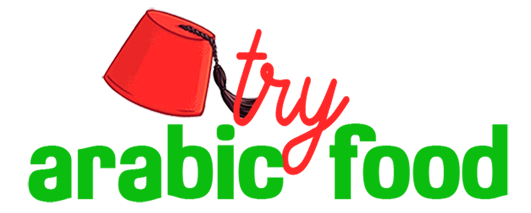Khlea (also spelled Khlii or Khlii Fassi) is a traditional Moroccan preserved meat delicacy, most famously prepared in the ancient city of Fes. Known for its rich flavor, long shelf life, and deep roots in Moroccan culinary heritage, Khlea is a staple in many Moroccan homes—especially during winter, Eid al-Adha, and festive gatherings.
This preserved meat is slow-cooked and sun-dried, then submerged in its own fat for months of storage. Khlea is typically made from lamb or beef and can be eaten with eggs, fava beans (bissara), couscous, bread, or simply on its own. It is a prime example of Moroccan ingenuity in food preservation and flavor mastery.
The History of Khlea in Moroccan Cuisine
Dating back centuries, Khlea Fassi originated in the imperial city of Fes, where families developed artisanal methods to preserve meat in the absence of refrigeration. During Eid al-Adha, large quantities of meat were processed into Khlea to ensure nothing was wasted. Women would gather in communal settings to marinate, cook, dry, and store the meat for later use during the cold months or during times of scarcity.
Throughout history, Khlea became associated with Moroccan hospitality and food security. Its long shelf life—up to a year when stored properly—made it invaluable, especially for nomadic communities and rural households.
Health Benefits of Khlea (Moroccan Preserved Meat)
While Khlea is a rich and indulgent meat product, it also offers nutritional value when consumed in moderation:
- High in protein – supports muscle repair and growth.
- Contains healthy fats – important for energy and nutrient absorption.
- Rich in iron and zinc – supports immune function and blood health.
- Provides energy – ideal for cold weather and labor-intensive days.
- Natural – contains no preservatives or artificial additives when made traditionally.
Ingredients for Authentic Khlea Fassi
The ingredients used to make Khlea are simple, yet require precision for preservation and flavor:
- 5 kg of beef or lamb (preferably with some fat)
- 1/4 cup coriander seeds
- 2 tbsp cumin
- 2 tbsp salt (or to taste)
- 2 tbsp garlic paste
- 2 tbsp vinegar or lemon juice
- 1/2 cup olive oil
- 1/2 cup water
- 2 tbsp paprika
- Optional: bay leaves, thyme, smen (fermented butter)
Fassi families often add a secret blend of local spices passed down through generations, making each household’s Khlea unique.
How to Make Khlea Fassi – Step-by-Step
Step 1: Cut and Marinate the Meat
Slice the meat into long strips. In a large bowl, mix garlic paste, vinegar or lemon juice, salt, cumin, coriander, paprika, and olive oil. Add the meat and massage thoroughly. Let it marinate for 24 hours in the fridge.
Step 2: Sun-Dry the Meat
After marination, hang the meat strips on a clean line in direct sun for 2–3 days until the meat becomes dry and leathery. Turn occasionally. Ensure it is covered from flies and dust using mesh netting.
Step 3: Slow Cook the Meat
Place the dried meat in a large pot with water and additional spices. Simmer over low heat for 2–3 hours until all liquid evaporates and the meat is tender. Add smen (optional) and cover with melted fat.
Step 4: Store the Khlea
Transfer the Khlea into sterilized glass jars. Pour melted fat over the meat to fully cover it. Seal tightly and store in a cool, dry place or the refrigerator. Khlea can last up to 1 year if preserved correctly.
How to Serve and Enjoy Khlea
Khlea is extremely versatile. It can be used in many Moroccan dishes or eaten simply with bread. Here are popular ways to serve it:
- Khlea with Eggs: Fry a few tablespoons of Khlea in its fat and crack in eggs. Let it cook gently for a classic Moroccan breakfast.
- Khlea with Couscous: Add to steamed couscous with vegetables for an intensely flavorful dish.
- Khlea with Bissara: Serve warm pieces of Khlea on top of thick fava bean dip.
- In Stuffed Bread: Use as a filling for Moroccan batbout or msemmen for a savory treat.
- With Lentils or Beans: Simmer with legumes to infuse the meal with smoky, preserved flavor.
Why Khlea Remains Popular Today
Even with modern refrigeration, Khlea remains a beloved Moroccan tradition. It embodies the values of sustainability, community, and ingenuity. Making Khlea is often a family affair, and many Moroccans abroad continue to follow their ancestors' recipes to keep their heritage alive.
Restaurants, food bloggers, and chefs have rediscovered Khlea in recent years, integrating it into modern dishes and gourmet menus. Its strong flavor and long shelf life make it appealing for adventurous food lovers and traditionalists alike.
Tips for Making and Storing Khlea
- Use high-quality meat with some fat content.
- Marinate overnight for deep flavor penetration.
- Dry the meat completely to prevent spoilage.
- Store only in sterilized jars to avoid contamination.
- Always keep meat submerged in fat for preservation.
- Use clean utensils when taking out portions from the jar.
- Khlea Fassi recipe
- How to make Moroccan Khlea
- Traditional preserved meat Morocco
- Moroccan dried lamb recipe
- Moroccan meat preservation method
- Khlea with eggs recipe
- Moroccan food for winter
- Best Moroccan breakfast dishes
- Homemade Moroccan khlii
- Authentic Fassi cuisine
Conclusion
Khlea Fassi is more than just preserved meat—it's a symbol of Moroccan culinary wisdom and a testament to traditional food preservation techniques. Whether you enjoy it with eggs, couscous, or simply with warm bread, this flavorful meat will transport your senses to the heart of Morocco.
Try making Khlea at home and explore the richness of Moroccan food culture through this iconic dish. Once you taste its unique flavor, it’s easy to understand why it’s treasured in Moroccan homes across generations.



